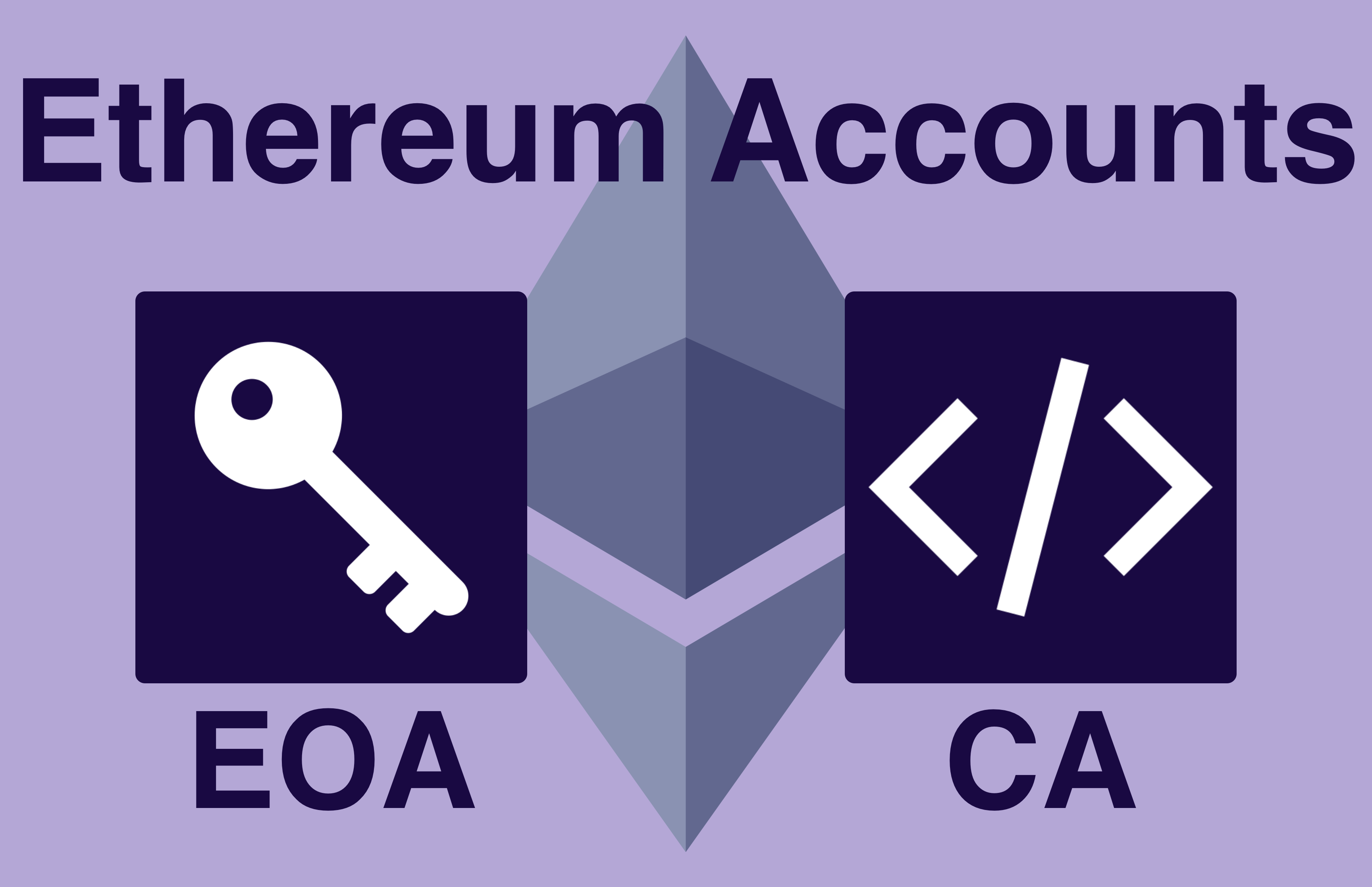
¶ Ethereum Accounts
¶ The World Computer
Ethereum is the World Computer, a single, globally shared computing platform that exists in the space between a network of 1,000s of computers (nodes).
These nodes are real computers in the real world, communicating directly from peer to peer.
The purpose of the greater Ethereum apparatus is to offer a single shared computing platform - the Ethereum Virtual Machine (EVM).
The EVM provides the context for transactions (computation); everything you "do" on-chain happens within the EVM.
¶ Native Property
Deep Dive: Internet-Native Property Rights
The EVM has a specific property, upon which all of Ethereum rests: native property rights.
Ethereum consensus is inherently built around the ability to distribute & confiscate (slash) ETH.
Discrete ownership is built in at the protocol level.
Within the EVM, native property rights manifest via Ethereum accounts. Accounts are the individual actors that exist within the context of the EVM.
There are two kinds of accounts: Contract Accounts (CA) and Externally Owned Accounts (EOAs).
¶ Relationship to the EVM
CAs exist entirely within Ethereum. Rather than being controlled by cryptographic keys, they are controlled by the logic contained within the smart contract's code.
EOAs, on the other hand, are controlled by someone (or thing) external to the EVM (eg a user).
All actions with the EVM require gas, and therefore initializing a CA (within the EVM) has a cost.
In contrast, initializing an EOA is free - all you need to do is generate the signing keys (external from the EVM), and you've gained control.
¶ EOAs and Keypairs
This last point is worth expanding on, but first... Digital signatures.
Tl;dr a digital signature is used to publicly confirm two things:
- the message was really sent by the person claiming to send it
- the message has not been tampered with
Digital signatures are based on keypairs, which are made up of a private and public key.
- private key + message = signature
- public key + signature + message = verification
The keypair is the core unit of cryptography; it provides verifiable identity.
Ethereum uses ECDSA (secp256k1) to generate EOA account keypairs. Those keypairs control the Ethereum account.
The concept of Account (the object holding your tokens) and the concept of Signer (the object authorized to move these tokens) are basically the same thing.
This is all in contrast to CAs, which do not have signing keys at all.
Instead, CAs are independent entities within the EVM that retain the same ownership rights as EOAs that ALSO retain its ownership of itself.
That ownership is manifested through the contract's code.
¶ Properties of an Account
On a technical level, both CAs and EOAs have the same 3 properties:
- an address
- an ETH balance
- a nonce (a counter that uniquely identifies each transaction per account)
CAs have two additional properties: code and storage.
¶ Tokens
Notice that EOAs (the accounts used by the vast majority of users, including me) don't have a field for tokens or assets other than ETH.
In fact, those assets exist in the records of CAs, registered to the EOA's account.
Consider a user who has 100 USDC. This USDC is not "in" the EOA account.
The CA account that controls USDC contains a database of Ethereum addresses and their balances.
And so, the ownership of the 100 USDC appears in the CA code and not within the EOA.
¶ Multicalls
The ability for CAs to have code/storage gives CAs much more flexibility than EOAs.
For example, CAs can execute many different actions in a single Ethereum transaction. This Argent/Uniswap tool allows for 1-click Uniswap LPing.
¶ Triggers
But CAs are not "more powerful" than EOAs - they are different.
The most important thing to know about Ethereum accounts is that only 1 type can initiate transactions (and therefore computation): EOAs.
CAs can take actions, but they must be first triggered by an EOA.
But this rule is not a law of nature - it was a philosophical decision to ensure that all transactions are triggered externally to the EVM.
This is a decision that could be changed through the Ethereum Improvement Process (EIP) procedure.
¶ Looking Forward
In fact, many more of the things we've discussed were similar design decisions, made by the visionaries building Ethereum at a specific time and for a specific reason.
Reasons that might not necessarily hold up for the long haul.
For example, Ethereum keypairs.
ECDSA (secp256k1) was a great, secure choice for the time, but it is incredibly vulnerable to quantum computers. In fact, a commercial quantum computer could completely break (today's) Ethereum...
...without even trying.
Fortunately, we've been thinking about this problem for a long time now.
The solution, led by groups like Stark Ware, ZK-Sync and Argent: Account Abstraction!
¶ Resources
Source Material - Twitter Link